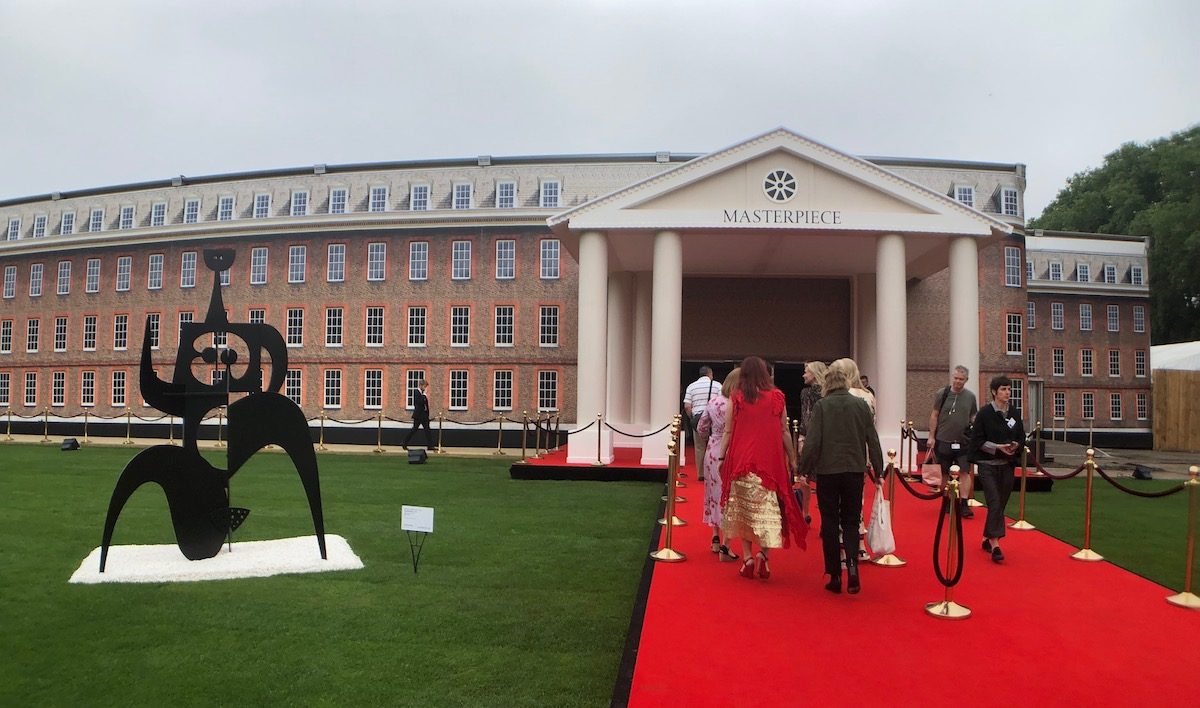I have always had ambiguous feelings about the annual Masterpiece London fine art and antiques fair, now under the umbrella of the Art Basel Group. This regular summer event, on the one hand, offers an excellent opportunity to see how the rich live. In particular, to see what they are likely to covet. Things that reinforce their sense of what they are; items that in their own domestic surroundings, will make them feel comfortable.
There’s no doubt that most of what is on view is of quite a high quality aesthetically
Suggesting that the event offers an array of masterpieces is, however, to push matters a little far. Major masterpieces don’t pop up for sale in fairs of this sort. Sometimes they surface on one of the great auction rooms, only to disappear again very rapidly. At Masterpiece, you are sometimes looking at items that may be priced in six figures, but rarely in seven or eight minus the odd Modigliani, Warhol or Haring.


There’s also no doubt that what is being offered is gradually changing. Events of this sort used to offer antique furniture and Old Master paintings. Now the furniture is getting less self-consciously antique. Look for Arts and Crafts and mid-century Modern. There was always quite a bit of jewellery. Now the diamonds are more lavish and the settings are unabashedly modern. There are indeed Old Master paintings. Some quite nice examples, mostly by Netherlandish masters who, in their own day, painted genre scenes and still lifes, not commissioned by a patron but ready, straight off the easel, to be sold in fairs. Then, as now, a common way of finding clients for art. There are also a fair number of portraits – 17th, 18th or 19th century – images that can be classified as ready-made ancestors for people who are wealthy now, but who don’t know in any detail precisely who their ancestors were.
The main emphasis, however, is on Modern and Post-Modern paintings by well-known names. Not usually the very finest works by these masters, but nevertheless authentic products, where you recognise at first glance who made them. Add to this a few dealers selling good quality antiquities and a stand or two offering African tribal art and the recipe is complete.
What seemed slightly eerie was the way in which this market, addressed chiefly to private clients, appears to be losing touch with the fare now regularly offered by our official museums. These do indeed show paintings and sculptures, but one often gets the sense that their hearts are not in this aspect of their activities. They offer us things which, though often made on a very ambitious scale, don’t smell of money. Performances, videos, installations – all of these are preferred. The visitor is offered an ‘experience’, democratically available to all and cleansed of the stench of commerce. If one finds an interchange between providers and audience here, it is often in the form of giving and taking moral lessons. In an official gallery of contemporary art, every visitor becomes a pupil, there to be taught.

One odd result of the division of intention – between unashamed commerce on the one hand and slightly de-haut-en-bas instruction of the other – was to make me enjoy the Masterpiece fair more than I might have done. There was more room for fantasy. I could dream about owning one or two of these objects, in much the same way as I might dream of winning the lottery.
The purpose, all too often, in today’s museums of modern art, is to administer doses of moralising instruction. As to whether or not this actually improves the lives of those to whom these prophylactic remedies are administered is, I think, an open question. Handing medicine out clearly makes museum curators and administrators feel good, but the practical effect is probably limited. Institutions of this sort preach, for the most part, to the already converted.
With a big art fair, the appeal is not to our moral instincts. True, Masterpiece does contain some installations by well-known contemporary artists – not the kind of thing you could house in any kind of domestic setting. These are there to cater to institutional buyers. They are also there to make you feel good – to mitigate the inevitable emphasis on money. Lots and lots of money. Go to an event like this and, even if you haven’t got money, you can still dream. Imagination’s pockets are always full.
Words: Edward Lucie-Smith Photos: Paul Carter Robinson © Artlyst 2019
Masterpiece London – Fair Ends On 3 July


